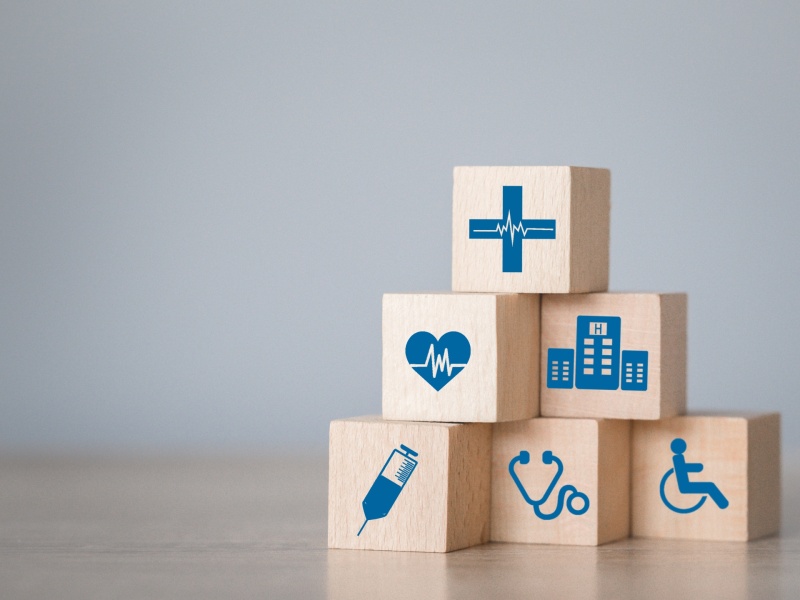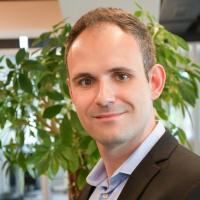9. May 2025 By Dennis Woyke
openEHR (part 2): future vision and prospects in Switzerland
How does openEHR work in everyday life, and what can it do for Switzerland? In this second part of my series, I outline a vision of the future with the aid of a fictitious model hospital that uses the standard to solve data problems and reduce staff workload. We will also explore the opportunities openEHR brings to Switzerland.
Decision-makers and specialists looking for practice and potential – take note! We will examine how openEHR works and why it is future-proof - in an understandable way, backed up with real-life examples. Discover the possibilities!
The model hospital as a practical example
How does openEHR work in practice? To demonstrate this, let's look at our fictitious model hospital as a theoretical example. It is a Swiss hospital that has switched to openEHR. Before the changeover, the situation was anything but optimal. The HIS at the time, a monolithic product, stored data in proprietary formats that were barely accessible to other systems. Silos were created within the hospital: each department had its own databases. Projects such as anonymized data marketing and collaboration with research partners regularly failed due to technical hurdles and dependence on the HIS manufacturer. At the same time, the pressure grew: the management saw the potential in using data for research and innovation, while the medical community demanded easier access to structured information.
The introduction of openEHR was a game changer. The standard brought structure to the flood of data. The pesky silos disappeared. Adjustments became much simpler: instead of complex changes to the entire HIS, a new template was sufficient. Now, the main focus of the HIS was on its usability and features. A new world opened up for research: structured data that can be anonymized is easier to share. The use of AI also came within reach – e.g. for analyzing patient progression or predicting treatment outcomes. The staff also benefited: time-consuming data preparation was no longer necessary and medical staff was able to focus more on their patients.
However, the transition itself was challenging. The first step was a comprehensive analysis with a focus on data protection and security. It was crucial that the data was not only stored securely, but also used in accordance with the law. The migration of the existing data was a dual task: technically, the information had to be transferred to the openEHR format, while the medical ontology could not be lost. At the same time, a new HIS was procured that was compatible with openEHR. Conversion systems such as laboratory systems or imaging devices were initially retained and later gradually adapted in order to keep the transition manageable for the staff. The changeover remained largely invisible to the doctors, but the improvements were immediately noticeable.
Dr. Müller, senior physician in anaesthesia, explains: "I used to have to compare data from different sources - now I have a reliable source that is a time-saver." The head of finance emphasizes the economic benefits: "Anonymized data generates income without us having to buy additional systems."
The feedback shows how versatile openEHR is. The sample hospital became less dependent on the HIS provider - switching to another system is now easier as the data is no longer tied to one manufacturer. Subsystems could be integrated more cost-effectively and internal processes became more efficient because redundant work steps were eliminated. Patients indirectly experienced better care, as doctors were able to access consistent data more quickly. The hospital's positive reputation grew and the foundation for big data or AI was laid. Standardization was not a constraint here, but a step toward agility.
openEHR - potential for Switzerland
Internationally, openEHR provides impressive evidence of its benefits. In Portugal, the standard is used in clinics to manage patient data and optimize workflows. In the north of Norway, it connects entire regions by bundling data from different facilities into a standardized system - a model that could also be of interest to Switzerland with its many small hospitals. Denmark is planning a national rollout and is developing specific archetypes tailored to the Danish healthcare system.
These examples show how openEHR creates synergies - from individual hospitals to nationwide networks. In Switzerland, the usage is still in its infancy, but there are promising approaches. The University Hospital or Basel would like to implement openEHR. The Swiss Personalized Health Network (SPHN) is using it to structure data for national research initiatives. These examples show that there is interest in openEHR in Switzerland. However, a nationwide roll-out is not yet in view.
The challenges in Switzerland are considerable. Hospitals are under high cost pressure and large IT projects rarely fit into budgets. Technical expertise and specialist staff are in short supply: the switch to openEHR requires specialized IT experts who are not largely available in Switzerland. The migration of existing data harbors risks: errors could affect data quality and therefore jeopardize patient safety. Added to this is the federal structure: with 278 hospitals organized on a cantonal basis, a coordinated roll-out is difficult. The HIS providers also play a role - they have an interest in protecting their existing systems and business models, which restricts adaptation to a new standard such as openEHR.
Despite these hurdles, the opportunities for Switzerland are great. openEHR could increase data interoperability and create synergies between hospitals - for example through the exchange of patient data for referrals or collaboration in regional networks. It would increase efficiency by eliminating redundant work steps and relieve the burden on staff, as less time would have to be spent on data maintenance. In the short term, it could simplify work processes, for instance through standardized input masks for nursing staff or faster access to laboratory results. In the long term, it lays the foundation for future-oriented technologies such as big data or AI - for example, for the development of decision support systems for medical staff.
A central "openEHR Switzerland initiative" could drive change by pooling interests and disseminating knowledge, such as openehr.ch. Financial support from the federal government and cantons would be essential to cover the high initial costs. Legal impetus could provide additional incentives to increase data interoperability between the players.
Conclusion
The model hospital shows that openEHR solves data problems and makes hospitals future-proof. For Switzerland, openEHR offers the opportunity to promote better networking and increased efficiency. But it requires investment, coordination and courage. Can openEHR transform our hospitals? I believe so - with a smart approach and coordination.
With our many years of experience in the areas of LeanKIS and digital strategies in the healthcare sector, we have the appropriate methods and expertise to evaluate the full potential of openEHR in your hospital.
Did you enjoy my two-part blog post series on openEHR? Then I would look forward to hearing from you. These two articles are a summary of a longer paper with corresponding source references. If you are interested, I would be happy to make this paper available to you upon request.

